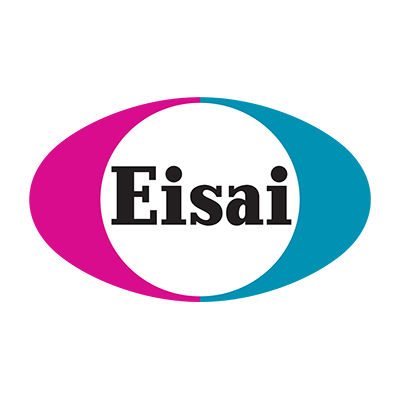预约演示
更新于:2025-05-07

Drugs for Neglected Diseases initiative
更新于:2025-05-07
概览
标签
感染
其他疾病
皮肤和肌肉骨骼疾病
小分子化药
化学药
CpG ODN
疾病领域得分
一眼洞穿机构专注的疾病领域
暂无数据
技术平台
公司药物应用最多的技术
暂无数据
靶点
公司最常开发的靶点
暂无数据
| 排名前五的药物类型 | 数量 |
|---|---|
| 小分子化药 | 12 |
| 化学药 | 3 |
| CpG ODN | 1 |
| 未知 | 1 |
| 合成多肽 | 1 |
关联
23
项与 Drugs for Neglected Diseases initiative 相关的药物靶点 |
作用机制 CYP51A1抑制剂 |
原研机构 |
非在研适应症 |
最高研发阶段批准上市 |
首次获批国家/地区 日本 |
首次获批日期2018-01-19 |
100
项与 Drugs for Neglected Diseases initiative 相关的临床试验NCT06606860
A Placebo Controlled, Double-Blind, 3-Arm Phase I Study to Investigate the Safety, Tolerability and Pharmacokinetics of Single and Multiple Doses of 20 mg/kg Oxantel Pamoate in Healthy Adult Volunteers
The goal of this clinical trial is to evaluate the safety, tolerability and pharmacokinetics of oxantel pamoate tablet after administration of a single and multiple dose in healthy male and female adult volunteers.
The main questions aim to answer if oxantel pamoate is safe and well tolerated in healthy volunteers and if is it absorbed by the human body.
A single dose and a multiple dose of oxantel pamoate will be compared to placebo to see if there are any different effects.
The main questions aim to answer if oxantel pamoate is safe and well tolerated in healthy volunteers and if is it absorbed by the human body.
A single dose and a multiple dose of oxantel pamoate will be compared to placebo to see if there are any different effects.
开始日期2025-01-27 |
申办/合作机构 |
ISRCTN31974125
A phase I double-blind, placebo controlled (part B only), randomised trial to evaluate the safety, tolerability and pharmacokinetics of single dose in fed state, and repeated doses of DNDI-6899 in healthy participants.
开始日期2024-09-30 |
CTRI/2024/07/071739
Estimating the Burden of Mycetoma: A Retrospective Analysis of Hospital Records - NIL
开始日期2024-08-12 |
100 项与 Drugs for Neglected Diseases initiative 相关的临床结果
登录后查看更多信息
0 项与 Drugs for Neglected Diseases initiative 相关的专利(医药)
登录后查看更多信息
553
项与 Drugs for Neglected Diseases initiative 相关的文献(医药)2025-05-01·The Lancet Child & Adolescent Health
Accelerating access to paediatric medicines: lessons learned from the Global Accelerator for Paediatric Formulations, a WHO-hosted network
Review
作者: Penazzato, Martina ; Cappello, Bernadette ; Cressey, Tim R ; Ojoo, Atieno ; Masini, Tiziana ; Lee, Janice Soo Fern ; Hatane, Luann ; Hafiz, Asma ; Fassinou, Patricia ; Morin, Sébastien ; Ruiz Villafranca, David ; Reeder, John C ; Garcia-Prats, Anthony J ; Valentin, Marie ; Ruel, Theodore ; Cohn, Jennifer ; Malik, Farihah
2025-04-10·Journal of Medicinal Chemistry
Discovery and Early Optimization of 1H-Indole-2-carboxamides with Anti-Trypanosoma cruzi Activity
Article
作者: Moraes, Carolina B. ; Dichiara, Maria ; Pollastri, Michael P. ; dos Santos, Deborah A. ; Chelucci, Rafael C. ; Feltrin, Clarissa ; Dessoy, Marco A. ; da Silva, Adriana C. ; Ferreira, Rafael A. ; Ferrins, Lori ; Mowbray, Charles E. ; de Oliveira, Luiz F. N. ; Krogh, Renata ; Kratz, Jadel M. ; Cruz, Luiza R. ; Ferreira, Leonardo L. G. ; Lee, Eun ; Duarte, Simone M. ; Dias, Luiz C. ; de Oliveira, Ramon G. ; dos Santos, Benedito M. ; Mollo, María C. ; Sjö, Peter ; Broering, Milena F. ; Simpson, Quillon J. ; Andricopulo, Adriano D. ; Koovits, Paul J.
2025-04-01·European Journal of Medicinal Chemistry
Spirocyclic compounds as innovative tools in drug discovery for medicinal chemists
Review
作者: Dias, Luiz C ; Varela, Marina T ; Aguiar, Francielle D ; Cruz, Luiza R ; de Oliveira, Luiz Fernando N ; Nogueira, João Pedro ; Dias, Gleiston G ; de Oliveira, Ramon G
15
项与 Drugs for Neglected Diseases initiative 相关的新闻(医药)2025-04-25
引言自2003年成立以来,得益于与全球伙伴的合作,DNDi已交付了13种针对被忽视的疾病的全新治疗方法,挽救了大量的被忽视疾病患者的生命。但对于大部分人而言,这些救命药的发现,仍是个“迷”。在本期推送中,DNDi研究员&《新药研发解密》栏目主讲人Fanny Escudié将以生动有趣的方式,为你揭示科学家们如何使用最先进的科学技术来改善世界各地数百万被忽视疾病患者的生活。《新药研发解密》2 高通量筛选技术:测试上百万分子,为被忽视的疾病寻找药物《新药研发解密》3 先导化合物优化的魔法:研究人员如何设计分子来治疗被忽视的疾病点击“阅读原文”,了解更多关于被忽视疾病药物研发的尖端技术及其背后的故事。关于DNDi被忽视疾病药物研发倡议组织(DNDi)是一个以病患需求为出发点的非营利性药物研发组织。DNDi主要为被忽视的疾病患者研发新的治疗方法,其中包括昏睡病、南美锥虫病、利什曼病、淋巴丝虫病、足菌肿、儿童艾滋病/艾滋病以及丙型肝炎的治疗方法。DNDi同时也在协调ANTICOV临床试验,为非洲的轻度至中度新冠肺炎(COVID-19)患者寻找治疗方法。自2003年成立以来,DNDi迄今已交付了13种全新的治疗方案,其中包括用于治疗利什曼病的新药物组合、两种固定剂量的抗疟药,首次成功研发的新化学实体药物非昔硝唑(fexinidazole)用于治疗昏睡病,以及通过南南合作研发的丙肝药物拉维达韦(ravidasvir),旨在为全球丙肝患者提供可负担的药物选择。*点击下方图片,了解更多有关DNDi的介绍。
2025-03-08
引语
一位来自肯尼亚偏远村庄的孕妇与内脏利什曼病的抗争,揭开了全球医药研发领域存在已久的隐蔽鸿沟——女性患者的用药困境。从临床试验的“玻璃门”到医疗服务递送的“被忽视”,无数像Mary一样的女性因为生理差异而无法获得救命药。DNDi正与全球的合作伙伴一起弥合性别差距,提升孕产妇的健康水平,让健康之光照亮每一个人,不论性别。
生死时速:当孕妇感染内脏利什曼病
在肯尼亚西部波克特县的隆盖莱村,一位养育四个孩子的妈妈——Mary Alamak又怀孕了。她如同从前一样,每天盼望着孩子的平安出生,但事与愿违。不知为何,怀孕的Mary最近不仅没有增重,反而在短时间内从80公斤骤减到45公斤。她日渐虚弱,甚至无法独立行走,到哪儿都需要有人搀扶。
"我的身体状况一天不如一天,吃不下任何食物,持续高烧,而且胃部剧痛难忍",Mary回忆道。与此同时,她每时每刻都在担心胎儿的健康,而对失去孩子的恐惧和担忧,让她陷入抑郁。
康复的Mary在讲述她的故事。[图源:Paul Kamau/DNDi]
为了找到她生病的原因,家人陪她来到医院进行检查。医生为她进行了疟疾、艾滋病毒和布鲁氏菌等一系列检测后,发现所有结果均呈阴性。接下来的一个月,Mary备受病痛煎熬,而医生也在继续努力寻找她的病因。终于,Mary为医生提供了新的线索——她的丈夫曾出现相同症状并接受过针对内脏利什曼病的治疗。
终于,在将Mary确诊为内脏利什曼病患者后,医生立即为她启用脂质体两性霉素B进行治疗——这是治疗内脏利什曼病患者的二线药物,也用于孕妇、65岁以上老人和两岁以下儿童等特殊人群。然而,这种药物必须冷藏保存在2-8℃环境中,并且持续10天的疗程费用高昂,这不管对于医院还是患者来说都是挑战。
幸运的是,Mary最终获得了这项安全有效的治疗,并恢复了健康。
被忽视的患者:临床试验中的性别差距
尽管Mary的故事发生在十多年前,但在今天,仍有许多像Mary一样的孕期女性面临感染“被忽视的热带病“的风险,并且女性常常成为”被忽视的患者“。
DNDi科学家Borna
Nyaoke-Anoke医生表示,作为一名研究者,令她最痛苦的经历就是在被忽视的热带病领域目睹女性被忽视。”足菌肿(另一种被忽视的热带病)会导致患者毁容,使女性无法工作,而她们往往受害最深——因为她们倾向于隐匿病情,不去寻求治疗和护理。其他人认为这是巫术所致,因为他们不了解这种疾病。"
Borna医生正在为一名足菌种患者进行诊治。[图源:Mamadou Diop-DNDi]
事实上,女性患者不仅仅在诊断和治疗等医疗服务递送阶段被忽视,早在药物研发的临床试验阶段,性别差距就已经显著存在。女性常被排除在临床试验外,导致难以开发出孕期或哺乳期女性可用的安全、有效且可负担的药物。
来自尼日利亚的妇产科教授Hadiza Galadanci曾指出,“截至2020年,全球有28.7万名女性死于孕产相关原因。而在临床试验中排除孕妇会导致在应对怀孕等特定场景下药物和技术的缺乏。“
泰国Siriraj临床研究中心(SICRES)创始主任Kulkanya Chokephaibulkit教授表示,”在临床试验中,青春期女性比男性更少。一些临床研究会有意避免女性参与,尤其是药物交互作用的有关研究。纳入青春期女性参与临床研究可能在知情同意、污名和社会压力、伦理考虑、隐私保密、依从性(如中途怀孕)、父母同意等方面遭遇挑战。“
尽管充满挑战,但科学家们认为,推进临床试验中的性别平等对提升女性乃至全人群的健康水平都有重要意义。DNDi 东南亚区域办公室主管Vanessa
Daniel指出:“若女性在临床试验中被忽视,那么她们的健康需求也会被遗忘,我们应该倡导真正反映真实的多元化世界的研究。“
向右滑动查看更多 >>
科学家们谈临床试验中性别平等的重要性。
破局密钥:性别响应型药物研发
可以看到,女性在传统生物医学研发中的特殊医疗需求长期被忽视。而女性和女童往往受被忽视的热带病影响尤为严重,却常常因为照护角色限制而无法及时获得诊疗服务。此外,尽管女性占全球人口半数,但其在药物开发中始终是被忽视的群体。
为了颠覆这一持续存在且危害严重的现状,DNDi承诺实施性别响应型药物研发最佳实践(如推动临床试验中女性参与者比例的提升,在保障安全的前提下系统性纳入孕期及哺乳期女性受试者),系统性地消除治疗可及性的性别壁垒,支持孕产妇健康。与此同时,DNDi也与伙伴机构合作,基于四大洲的经验,建立文化特异性障碍分析模型,并从药物研发早期阶段就纳入性别公平的考量。
目前,DNDi的研究人员已经公开发表了一项关于纳入可能在临床试验过程中怀孕的女性人群的安全伦理框架。制定了(含潜在妊娠人群),该框架从伦理层面规范了安全采集新药审批所需数据的实践准则。通过将性别因素主动纳入临床研究与项目设计,并提高治疗可及性,DNDi能够推动知识进步,最终增加获批用于治疗被忽视的热带病的药物数量——涵盖所有人群,包括孕妇及育龄女性。
临床试验安全伦理框架提议。图源:公开发表论文《Inclusion of women susceptible to and becoming pregnant in preregistration clinical trials in low- and middle-income countries: A proposal for neglected tropical diseases》
值得注意的是,满足女性特殊医疗需求的研究高度依赖女性科研人才的深度参与。而目前女性在研究领域的代表性往往不足。为推进女性参与科学研究以促进公平的药物研发,DNDi成立跨部门性别响应型研发与可及性指导委员会,并在建立公平薪酬体系、提供平等的职业发展培训与晋升通道以及在招聘过程中消除隐性偏见等方面不断努力。
值此国际妇女节之际,我们呼吁医药研发领域及医疗服务领域的伙伴们重视性别差距,并以共同努力来重塑医药研发的未来:
✅ 在临床研究与项目设计中纳入性别因素✅ 提升临床试验中女性参与者比例✅ 支持女性科研人才参与药物研发
未来,每个生命都能平等享有健康,救命药不再有“性别密码“。
如果你喜欢这篇文章,欢迎分享给对临床试验中的性别公平、健康公平等议题感兴趣的朋友或同事。还可以点击“阅读原文“,在DNDi的官网了解更多你感兴趣的内容。
关于DNDi
被忽视疾病药物研发倡议组织(DNDi)是一个以病患需求为出发点的非营利性药物研发组织。DNDi主要为被忽视的疾病患者研发新的治疗方法,其中包括昏睡病、南美锥虫病、利什曼病、淋巴丝虫病、足菌肿、儿童艾滋病/艾滋病以及丙型肝炎的治疗方法。DNDi同时也在协调ANTICOV临床试验,为非洲的轻度至中度新冠肺炎(COVID-19)患者寻找治疗方法。
自2003年成立以来,DNDi迄今已交付了13种全新的治疗方案,其中包括用于治疗利什曼病的新药物组合、两种固定剂量的抗疟药,首次成功研发的新化学实体药物非昔硝唑(fexinidazole)用于治疗昏睡病,以及通过南南合作研发的丙肝药物拉维达韦(ravidasvir),旨在为全球丙肝患者提供可负担的药物选择。
*点击下方图片,了解更多有关DNDi的介绍。
临床研究
2025-02-15
作为玛希隆王子奖会议的子活动之一,“在多重危机时代通过南南合作应对被忽视的疾病,促进健康安全与公平”主题讨论会于2025年1月29日在泰国曼谷举行。据悉,玛希隆王子奖会议(Prince Mahidol Award Conference, PMAC)是全球公共卫生专家最大规模的年度聚会之一。
被忽视疾病药物研发倡议组织(DNDi)、登革热联盟(点击这里,了解更多关于联盟)以及泰国玛希隆大学诗里叻医学院共同组织了此次主题讨论会,旨在分享和交流南南合作模式的经验,该模式为治疗丙型肝炎和登革热提供了解决方案。
01
可负担的创新:
从丙肝另类研发模式中汲取的经验
嘉宾介绍
主持人
Kulkanya Chokephaibulkit教授,泰国诗里叻临床研究所(SICRES)创始主任兼顾问
发言嘉宾
1. Muhammad Radzi Abu Hassan医生,马来西亚卫生总监
2. Tawesak Tanwandee博士,泰国玛希隆大学诗里叻医学院消化内科教授
3. Yasser Fayed博士,欧洲埃及制药工业公司(EEPI)首席执行官兼Pharco公司企业业务发展总监
4. Ramon Neves博士,巴西奥斯瓦尔多·克鲁兹基金会(Fiocruz)医疗生产与创新副总裁
5. Isabela Ribeiro博士,被忽视疾病药物研发倡议组织(DNDi)病毒性疾病部主任
6. Isariya Techatanawat博士,泰国政府制药组织(GPO)研发与创新部主任
讨论概览
嘉宾们重点介绍了南南合作模式在丙型肝炎治疗中的成功经验。马来西亚最近一项临床试验结果显示:与标准治疗方案相比,使用Ravidasvir的短期治疗方案同样有效,尽管对于较少见的基因型可能还需进一步研究。这一短期方案的实施将带来更可负担的治疗、更高的患者依从性以及更好的真实世界治疗效果。在泰国,政府制药组织(GPO)正在推进与Pharco的技术转让,以便在泰国本土进行药物的生产制造。这些进展将有助于提高泰国及该地区丙型肝炎治疗的可及性,促进疾病消除并赋能本地制药产业。总体而言,这些进展凸显了南南合作模式在其他创新领域的潜力。
重要观点
强有力的领导与伙伴关系:有效的政府领导与强有力的公私合作相结合,可推动本土解决方案,加强医疗体系建设,并为消除丙型肝炎提供可负担的治疗。
创新且可及的治疗:简化的短期治疗方案——以Ravidasvir与Sofosbuvir联合用药为例——提高了患者依从性,降低了治疗成本并扩大了可及性,同时强调了持续创新和将其纳入国家计划的必要性。
本地生产与可复制的策略:建立区域药品生产不仅通过减少依赖性增强了健康安全,还为全球南部国家应对其他被忽视的疾病提供了一个模式参考。
02
登革热治疗的希望:
以流行国家为主导的合作研发模式应对气候敏感疾病
嘉宾介绍
主持人
Prasert Auewarakul教授,泰国玛希隆大学诗里叻医学院研究部病毒学家
发言嘉宾
1. Muhammad Radzi Abu Hassan医生,马来西亚卫生总监
2. Panisadee Avirutnan教授,泰国玛希隆大学诗里叻医学院登革出血热
研究部主任
3. Mauro Teixeira博士,巴西巴西米纳斯吉拉斯联邦大学(UFMG)生物
化学与免疫学系教授
4. Ganesan Karthikeyan博士,印度转化健康科学与技术研究所(THSTI)
执行主任
5. Ramon Neves博士,巴西奥斯瓦尔多·克鲁兹基金会(Fiocruz)医疗
生产与创新副总裁
6. Andre Siqueira博士,被忽视疾病药物研发倡议组织(DNDi)登革热项目负责人
讨论概览
大家先观看了一部名为《治疗发烧的星球》的影片(点击这里观看),随后进行了小组讨论。嘉宾们讨论了开发有效的登革热治疗药物的紧迫性,以及通过登革热联盟实现南南合作的前景。他们指出,该联盟的成立标志着这一模式的进步,从临床开发扩展到更早期的药物发现阶段。目前,多种候选药物(包括老药新用和新化合物)正在进行体外和动物模型测试,最有前景的药物预计很快将进行临床试验。嘉宾们强调,来自合作伙伴国家的强有力的政策支持和政府承诺对于这些行动的成功至关重要。通过加强区域合作并利用本地专业知识,这一合作模式旨在加速创新、丰富治疗选择,并最终减少登革热疫情带来的重大健康和经济负担。综上,及时干预和战略伙伴关系对于弥合现有治疗差距具有关键作用。
重要观点
开展南南合作:借鉴丙型肝炎治疗方法开发的经验,指导区域伙伴关系和可持续的研发。
登革热控制的综合方法:将有效的治疗药物与疫苗和病媒控制相结合,以解决登革热管理中的关键差距。
确保可负担性与可及性:优先考虑可负担的治疗方案,平衡公共卫生需求与商业可行性。
加强本地能力建设:加强登革热流行地区的药物研发和制造能力,以减少健康和经济影响。巴西2024年的登革热疫情激增凸显了实施该方法的紧迫性。
*文中所有图片来源于DNDi
关于DNDi
被忽视疾病药物研发倡议组织(DNDi)是一个以病患需求为出发点的非营利性药物研发组织。DNDi主要为被忽视的疾病患者研发新的治疗方法,其中包括昏睡病、南美锥虫病、利什曼病、淋巴丝虫病、足菌肿、儿童艾滋病/艾滋病以及丙型肝炎的治疗方法。DNDi同时也在协调ANTICOV临床试验,为非洲的轻度至中度新冠肺炎(COVID-19)患者寻找治疗方法。
自2003年成立以来,DNDi迄今已交付了13种全新的治疗方案,其中包括用于治疗利什曼病的新药物组合、两种固定剂量的抗疟药,首次成功研发的新化学实体药物非昔硝唑(fexinidazole)用于治疗昏睡病,以及通过南南合作研发的丙肝药物拉维达韦(ravidasvir),旨在为全球丙肝患者提供可负担的药物选择。
*点击下方图片,了解更多有关DNDi的介绍。
临床研究
100 项与 Drugs for Neglected Diseases initiative 相关的药物交易
登录后查看更多信息
100 项与 Drugs for Neglected Diseases initiative 相关的转化医学
登录后查看更多信息
组织架构
使用我们的机构树数据加速您的研究。
登录
或

管线布局
2025年11月02日管线快照
管线布局中药物为当前组织机构及其子机构作为药物机构进行统计,早期临床1期并入临床1期,临床1/2期并入临床2期,临床2/3期并入临床3期
临床前
7
4
临床1期
临床2期
5
1
临床3期
其他
6
登录后查看更多信息
当前项目
| 药物(靶点) | 适应症 | 全球最高研发状态 |
|---|---|---|
Acoziborole | 非洲锥虫病 更多 | 临床3期 |
洛匹那韦/利托那韦/齐多夫定/拉米夫定 ( HIV-1 pol x RT ) | HIV感染 更多 | 临床2期 |
非昔硝唑 | Chagas病 更多 | 临床2期 |
LXE-408 ( Proteasome x kinetoplastid proteasome ) | 内脏利什曼病 更多 | 临床2期 |
Fexinidazole sulfone | 利什曼病 更多 | 临床2期 |
登录后查看更多信息
药物交易
使用我们的药物交易数据加速您的研究。
登录
或

转化医学
使用我们的转化医学数据加速您的研究。
登录
或

营收
使用 Synapse 探索超过 36 万个组织的财务状况。
登录
或

科研基金(NIH)
访问超过 200 万项资助和基金信息,以提升您的研究之旅。
登录
或

投资
深入了解从初创企业到成熟企业的最新公司投资动态。
登录
或

融资
发掘融资趋势以验证和推进您的投资机会。
登录
或

生物医药百科问答
全新生物医药AI Agent 覆盖科研全链路,让突破性发现快人一步
立即开始免费试用!
智慧芽新药情报库是智慧芽专为生命科学人士构建的基于AI的创新药情报平台,助您全方位提升您的研发与决策效率。
立即开始数据试用!
智慧芽新药库数据也通过智慧芽数据服务平台,以API或者数据包形式对外开放,助您更加充分利用智慧芽新药情报信息。
生物序列数据库
生物药研发创新
免费使用
化学结构数据库
小分子化药研发创新
免费使用





